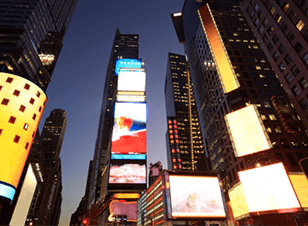 In an age of all things digital, it was only a matter of time before it was going to impact signage as well. In fact, Digital Out of Home (DOOH) advertising is one of the fastest growing advertising mediums in the world right now with $6.9 billion spent on advertising signage last year alone.
In an age of all things digital, it was only a matter of time before it was going to impact signage as well. In fact, Digital Out of Home (DOOH) advertising is one of the fastest growing advertising mediums in the world right now with $6.9 billion spent on advertising signage last year alone.
One of the biggest indicators that digital signage will continue to enjoy a growth in popularity is the considerable investment by Google. Its Chromebox got everyone talking at the 2014 Digital Signage Expo and it offers an affordable solution for cloud-based digital signage.
The combined power of this cloud-based software with proximity marketing, interactivity and touchscreens has the potential to change the digital signage landscape as we know it. Let’s take a closer look at these trends…
3 Digital Signage Trends
Proximity-based
Your customers and prospects are exposed to numerous digital advertisements all vying for their attention. But proximity-based digital signage provides you with an opportunity to gain the competitive edge. You see, as long as Bluetooth is enabled on their device, you can send targeted offers aimed at appealing to them on the spot. For example, Red Bull used digital signage to promote its drink to customers walking by its advertisements. The sign detects a Bluetooth device and asks the customer if it would like to receive an offer from Red Bull. The discount coupon is then sent to interested consumers via their mobile device. Read more about this campaign here.
Interactive
Interactivity is essential to keeping your target audience interested and engaged. After all, it’s not just about getting customers and prospects to see your digital signage – it’s about having them remember your product or service. A digital signage campaign for Dimetapp cold and flu medicine was a great example of how to effectively use DOOH advertising to increase the relevance of your campaign message. The campaign used more than 600 retail and cafe network screens across Australia and used sensor technology to build awareness of the product in specific locations when an area was experiencing a cold spell outside. Read more about this campaign here.
Touchscreen
The widespread use of smartphones and tablets has made users extremely comfortable with touchscreens. So it makes sense that this technology has the potential to be one of the next big things in digital signage. It is engaging and puts users in control of their experience. Check out how Pizza Hut has explored this technology to produce a touchscreen table to transform a customer’s ordering experience when dining in-house.
At the end of the day, any form of interactivity makes it harder for consumers to ignore your brand and they will feel as though your sign is communicating directly with them.






